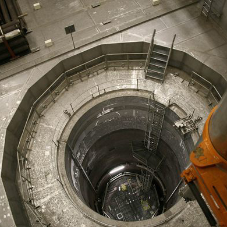During UK Construction Week 2022, a seminar on sustainable energy was held by Girvin Gill of the Sustainable Energy Association and Scott Armstrong of Planet Mark.
They discussed the UK’s continual failure to successfully implement effective energy policies and explained what could be done to help keep the UK on track for net zero.
Girvin Gill of the Sustainable Energy Association (SEA) held the first part of the talk, in which he mentioned that energy policies in the UK are most often short term and reactive. Consider the current energy crisis, which has already been caused by a lack of long-term strategy. Governments only serve on 5-year mandates which, he mentioned, can complicate efforts to achieve long term targets.
This means consecutive governments need to work towards consistent long-term goals, such as “cutting emissions by at least 68% by 2030 on 1990 levels, and reaching net zero by 2050.”
With a recent change in UK Government, issues such as fracking have recently made it back into news headlines. The practice, which environmental campaigners are widely against, is thought of more favourably than by previous governments. The knock-on impacts of re-committing to the use of fracking may endanger the goals of the Paris Agreement to reach Net Zero by 2050.
Gill admitted that this is perhaps the most difficult hurdle to tackle with energy policy but suggested that a potential solution could be for the UK to be more proactive with energy policy, rather than waiting for crises such as the current energy crisis to bring energy policy to the forefront of discussion. These proactive policies could also be long-term agreements which consecutive governments would need to remain committed to.
When proactive green policies have been implemented, they’ve often been a fraction of what was actually promised. Take, for example, the recent Green Homes Scheme. The scheme was planned to upgrade 600,000 homes by installing heat pumps and solar panels. However, the scheme only renovated a fraction of that, the AMA Gas and Electricity Market Report mentions the failure of this scheme:
“The scheme reached only 10% of the 600,000 homes originally targeted – reasons for its failure included Covid-19, installers being overwhelmed with demand in parts of the country and even some builders overcharging for their work.”
Gill mentioned that the failures of previous green energy policies can erode public trust in future schemes.
Another issue is just how inadequate the UK’s housing stock is to cope with the target of Net Zero by 2050. Only 15% of the UK’s housing stock has been made since 1990, meaning that 85% of UK homes were constructed at a time when insulation standards were significantly lower (if considered at all). This makes a considerable impact on the UK’s carbon footprint, as better insulation can reduce our total consumption of operational carbon. As it currently stands, Gill stated that the UK has ‘the worst insulation standards in Europe’.
When considering the need for more proactive energy policies, a drive to increase the insulation standards across the whole country (and perhaps update and improve the current housing stock) seems like a good place to start.
Scott Armstrong of Planet Mark also spoke at the talk. His primary focus was on embodied carbon and operational carbon.
Embodied Carbon
Embodied carbon is the carbon footprint of a building up until it has been fully constructed and becomes operational.
Armstrong stated that 37% of global C02 emissions come from the construction and use of buildings. Meaning it is vitally important for us to reduce both the embodied and operational carbon footprints of the buildings we construct and use.
Reducing embodied carbon, Armstrong argued, requires increasing energy efficiency in the construction of buildings. He suggested that Steel, which makes up 8% of global CO2 emissions, could be substituted for recycled steel, which requires 20% less carbon to produce. Alternatively aluminium could be used in place, as it is 100% recyclable. Armstrong also stated that LED lighting is a must have for modern structures.
Operational Carbon
Operational carbon refers to the carbon emissions that occur throughout the lifespan of a building.
When talking about operational carbon, Armstrong mentioned that potential ways to deal with this include making homes, offices, and car parks Electric Vehicle ready.
Thermodynamic modelling should be used in the design of new structures to maximise energy efficiency. As mentioned earlier in this article, well insulated buildings also have a significantly lower operational carbon footprint.
While it may look like a lot of doom and gloom, there is still reason to be hopeful that the UK can reach its targets for Net Zero.
There has been a lot of investment from into energy in recent years and, as the AMA report states:
“In value terms, 79% of energy generation construction projects over the past five years have related to renewable energy, with gas and nuclear representing a combined 21%.”
There is still time for the UK to get itself on track for Net Zero by 2050, and from the figures presented, it does seem that at least some measures are being taken to help achieve this goal.
Related Blog Articles



crop192.png)












